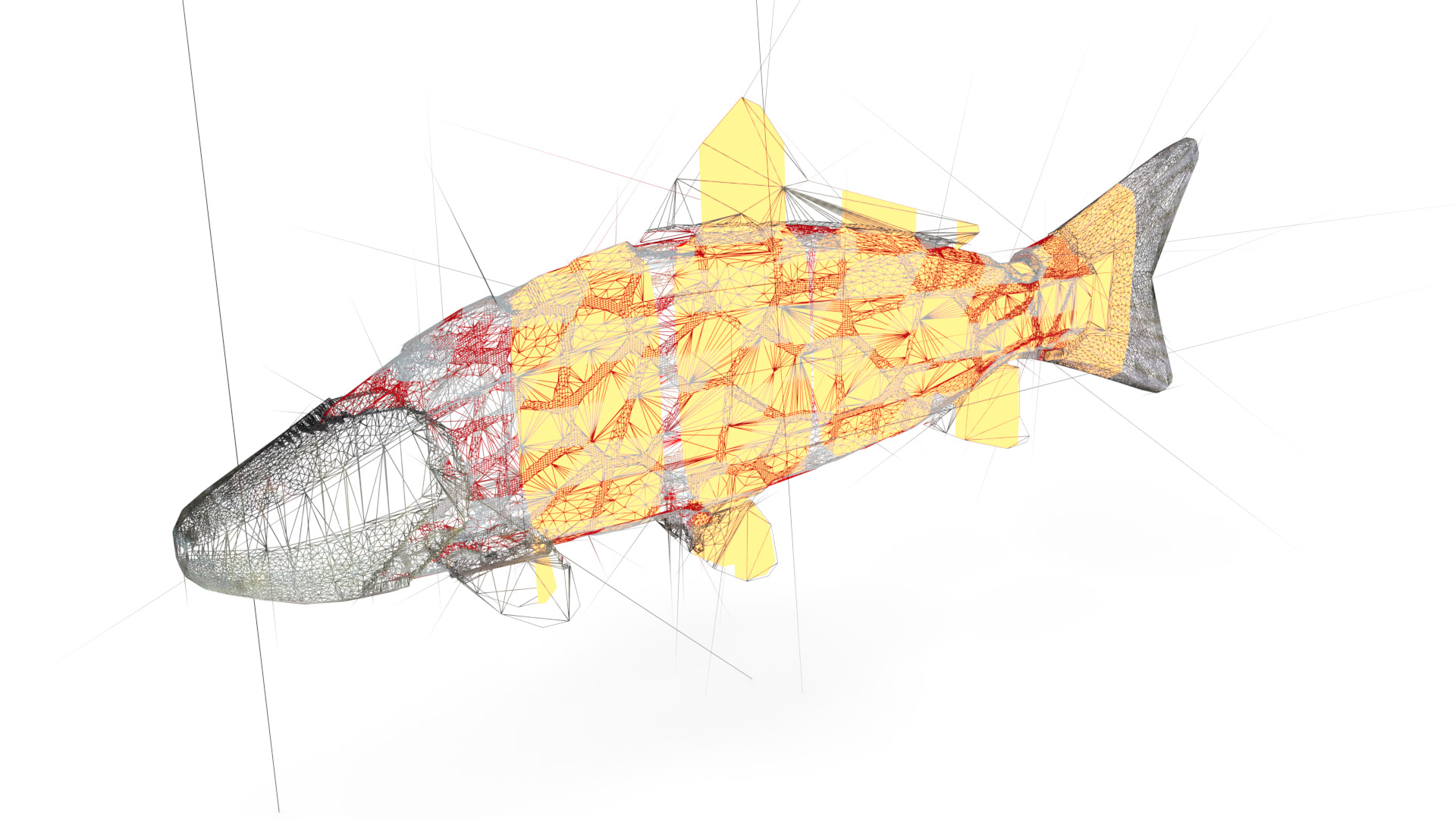In this project, you will explore materiality of the physical and digital world. To do this, you will have to examine the role of materials and structures in the built and designed environment, and how their nature might be altered and recontextualized to highlight, elevate, or interrogate their existence. These 3D works should seek to ask at least one question about the way people have organized the world around them.
You will model, texture, light, and render a set of three related images and critically reflect on your work in a 150 word work statement. These images do not have to be of the same object(s), but they must have some common conceptual thread that ties them together as a body of work. You will develop a concept by first considering a subject like an environment, structure, object, or experience that you find interesting or problematic. Experiment with unexpected materials, proportions, scales, alerations, and additions or subtractions. Since aesthetics are not only concerned with the way that things look, but also the underlying principles used to establish meaning, emotion, and senstation, try to think about the external forces at play shaping the objects of your interest.
A successful project will demonstrate understanding and mastery of 3D tools and processes, the application of formal design principles, competent rendering technique, good composition practices, and will require the you lead a presentation and discussion about your work.
Production Methods
You will go through a variety of different project phases including:
- Identify an object or issue that interests you;
- Develop concept through brainstorming, sketching, and research;
- Produce models, texture maps, and surface shaders;
- Create lighting and cameras;
- Configure render settings and experiement for high quality results;
- Get feedback and improve your work;
- Write work statement.
Example work:
- John Butler
- Jonathan Monaghan
- Kim Laughton
- Pinterest: Speculative Aesthetics
- Vimeo Channel
- Speculative Product Design on Pinterest
- Material Ecology
- MAK Design Salon 4: Meinong’s Taxonomy of Objects, Dunne and Raby
- The Institute for New Feeling
- drfranken
- Material Immaterial
- Yi Design
- Gianmaria Della Ratta
- Nemanja Pesic
- Jonathan Quintin
- Sim Stim
Constraints
- Use 3D tools to produce images
- Three separately rendered images
- All assets used in the production of the work must be created by you, be appropriately licensed for use, or be appropriated in a transformative way that significantly alters the nature of the original asset.
Deliverables
All deliverables will be uploaded to the linked dropboxes.
- Concept drawings and idea maps
- Please have between 3-5 ideas in mind to discuss
- Upload scans or photographs and name/number according to this convention: concept-[#].jpg (I.E. - concept-1.jpg) to the Project 1 Concepts submission dropbox.
- ‘well-photographed’ and cropped/straightened photos of your concept drawings and text - If you prefer to write a description, you can use .doc or .txt format
- In-process polygonal wireframes screenshots
- Upload screenshots of your polygonal wireframes according to this convention wireframe-[#].png (I.E. - wireframe-1.png) to the Project 1 Wireframes submission dropbox.
- Attempt to meet the CheckMate 3D Modeling Pro Standard
- Final renders
- Upload a renders according to this convention: render-[#].png (I.E. - render-1.png) to the Project 1 Renders submission dropbox.
- Image Size: 2000x2000 square
- Work statement
- Upload statement-final.doc to the Project 1 Statement submission dropbox.
- OPTIONAL: Post critique work updates)
- Upload any work revisions to the _Project 1 Revisions submission dropbox.
